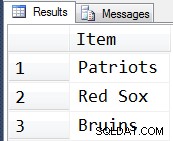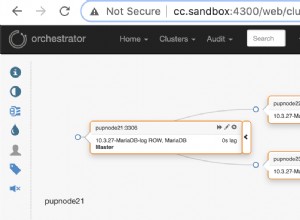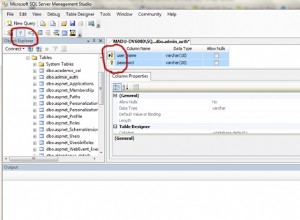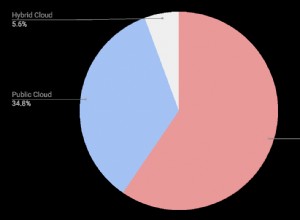Zestaw wyników rs =pStmnt.executeQuery() zwróci zestaw wyników, który nigdy nie będzie pusty, dopóki nie będzie wyjątku, jeśli chcesz sprawdzić, czy rekordy są dostępne, możesz użyć metody rs.next() sprawdź, czy są jakieś rekordy, czy nie zestaw wyników
public boolean createRecord(Myuser myuser)
{
Connection cnnct = null;
PreparedStatement pStmnt = null;
try
{
cnnct = getConnection();
String preQueryStatement
= "SELECT * FROM MYUSER WHERE MYUSER.USERID = ?;";
pStmnt = cnnct.prepareStatement(preQueryStatement);
pStmnt.setLong(1,youruserid);
ResultSet rs = pStmnt.executeQuery();
if (!rs.next())
{
String insertStatement
= "INSERT INTO MYUSER VALUES (?, ?, ?, ?, ?, ?, ?, ?)";
PreparedStatement ps = cnnct.prepareStatement(insertStatement);
ps.setString(1, myuser.getUserid());
ps.setString(2, myuser.getName());
ps.setString(3, myuser.getPassword());
ps.setString(4, myuser.getEmail());
ps.setString(5, myuser.getPhone());
ps.setString(6, myuser.getAddress());
ps.setString(7, myuser.getSecQn());
ps.setString(8, myuser.getSecAns());
System.out.println("new user inserted");
return true;
}
else
{
System.out.println("user already in data base");
return false;
}
}
catch (SQLException ex)
{
while (ex != null)
{
ex.printStackTrace();
ex = ex.getNextException();
}
}
catch (IOException ex)
{
ex.printStackTrace();
}
finally
{
if (pStmnt != null)
{
try
{
pStmnt.close();
}
catch (SQLException e)
{
}
}
if (cnnct!= null)
{
try
{
cnnct.close();
}
catch (SQLException sqlEx)
{
}
}
}
}




